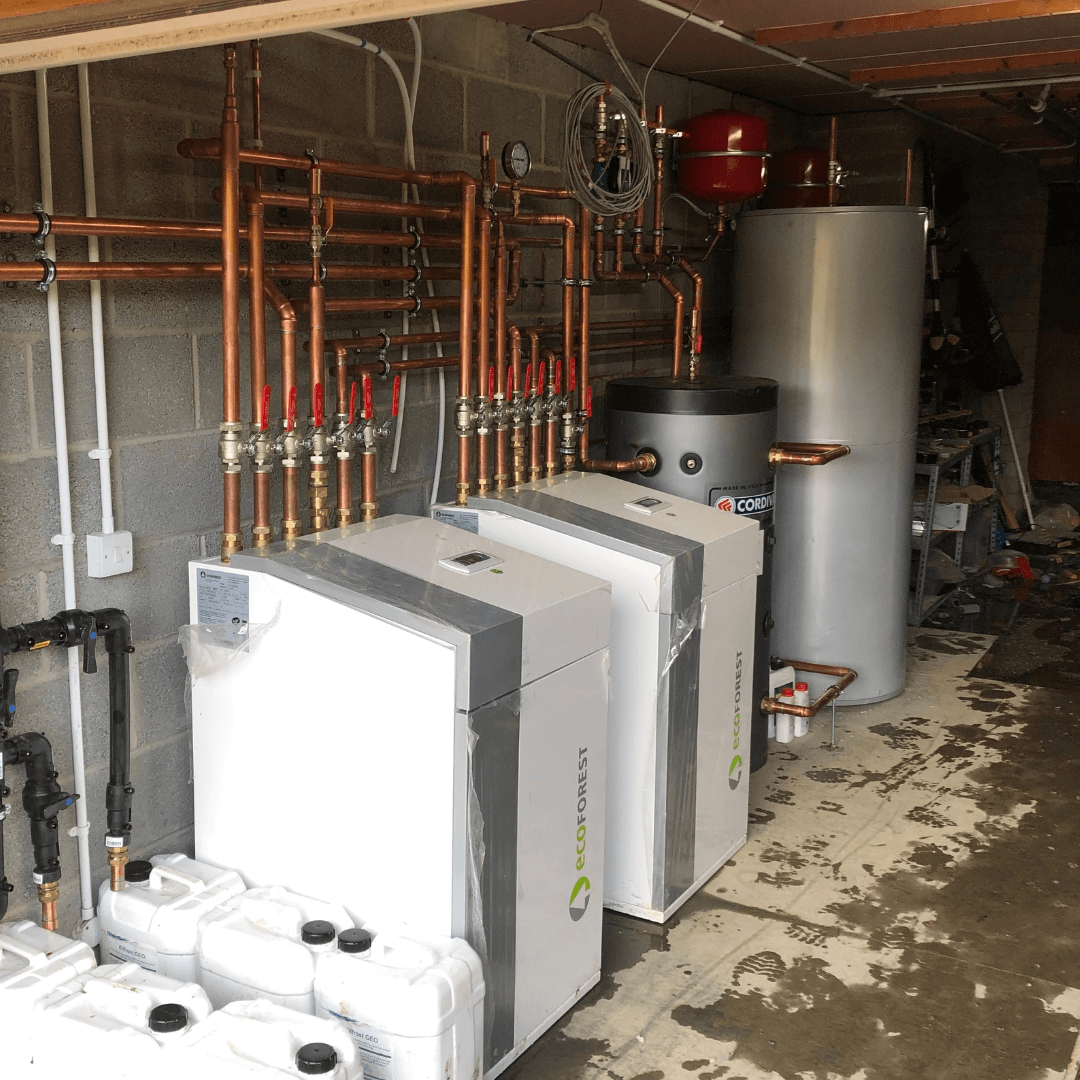Ground Source Heat Pump
Radiation from the sun heats the earth’s ground. The earth then stores the heat and maintains a temperature of around 10°C, either just below the surface or up to 2m down. It maintains this temperature even through the winter when temperatures can drop below zero on the surface.
The pipes for a ground source heat pump system are commonly buried horizontally in a trench about a metre below the ground, providing there is enough space to do this. Alternatively, boreholes can be drilled down to extract heat from further below the surface.
The way a GSHP works is by circulating a non-toxic Glycol fluid through a buried ground loop. The heat from the ground is absorbed at low temperature by the liquid which then passes through a heat exchanger in the heat pump.
What are the benefits of a ground source heat pump?
There are many benefits available when utilising an air source heat pump system:
- The cost of running a GSHP is much less than other methods of heating, such as an oil boiler, LPG, gas or conventional electric heating
- The Boiler Upgrade Scheme means you could get £7,500 off the cost of an installation
- An GSHP has a low carbon footprint and will be a major part of the UK reaching net zero
- The energy generated by an air-source heat pump can be used to heat your home and provide hot water
- No more fuel deliveries for those off-grid needing oil or LPG
- Fuel savings between 10% to 70% in some instances
- Coupling your heat pump with another renewable energy source, like Solar PV, can generate even bigger savings


